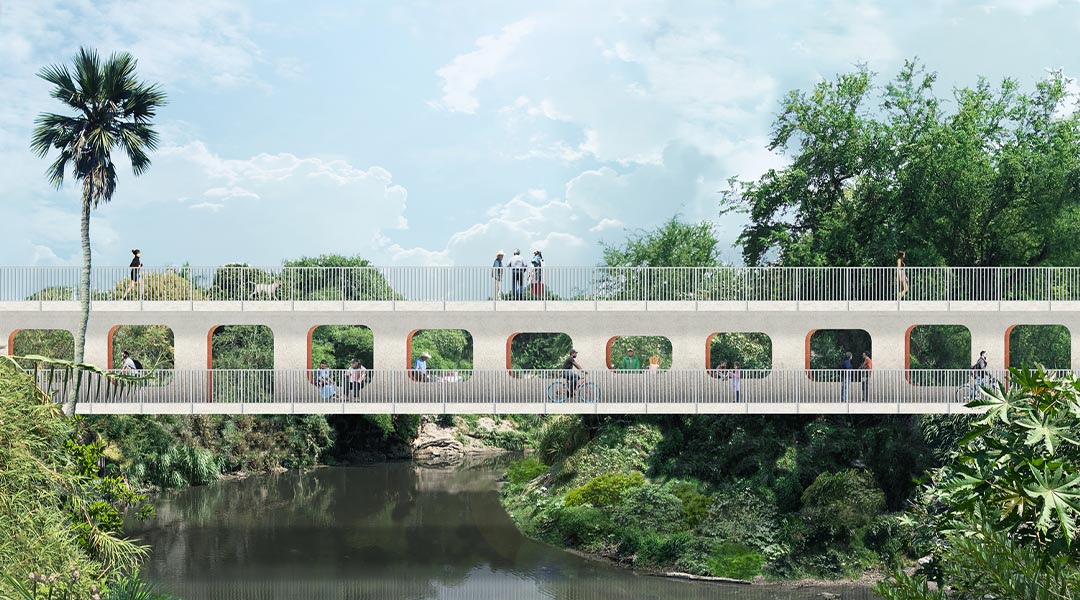
Making Use of The Roads Less Travelled: OMA’s Jojutla Pedestrian Bridge
Earthquakes and other natural disasters have become frequent occurrences across the country. Just this early September 27, a magnitude 5.7 earthquake was recorded in Looc Occidental Mindoro at 1:12 am. The strong quake was weaker in scale once it reached metro manila but it’s still slightly alarming that earthquakes have become more frequent compared to past years. In the event of stronger tremors, communities could be faced with the dangers of toppling skyscrapers and the destruction of major roads that the country has, unfortunately, kept as the dominant infrastructures. In the face of stronger natural challenges, it’s imperative that the country’s transportation evolve into infrastructure that is not only sustainable but also walkable and human-friendly – qualities that are apparent in the Jojutla Pedestrian bridge.
In Mexico, the Jojutla Pedestrian bridge will soon stand as a project that extends from a larger reconstruction effort by Infonavit (National Workers’ Housing Fund Institute) that was conceptualized after the earthquakes in 2017. The 145-meter bridge was designed by OMA New York, aims to restore infrastructure alongside community spirits, and works as a bridge only for pedestrians and cyclers.
According to OMA partner, Shohei Shigematsu, “Its two datums simultaneously reconnect not two, but three, fractured neighborhoods, anticipate disasters beyond earthquakes by mitigating potential flooding, and provides new amenities to revitalize people’s relationship to a river that’s currently feared or overlooked.”
The Jojutla Pedestrian bridge itself dodges private properties and crosses the Apatlaco river twice, anchoring itself to Panchimalco, a colony south of the municipal capital, the blocks at the bottom of Pacheco alley which is close to the historic center, and the Juarez neighborhood which was the most central neighborhood but the most damaged by the earthquake.
Akin to a large I-beam, the Jojutla Pedestrian bridge’s form gives way to a double-decker concrete structure and has an upper deck providing a higher datum that anticipates rising water levels and provides shade for the dedicated pedestrian and bicycle paths below. The flanges meanwhile allow for a wider surface for occupiable spaces and mobility space. The entire length of the bridge has pierced, habitable openings that can work as different spaces–benches, stairs, and doors that can accommodate diverse activities, pace, and access.
The Jojutla Pedestrian Bridge is a prime example of how people can utilize different spaces and focus more on widening options for transportation instead of focusing on widening roads for cars and disregarding infrastructure that most cater to those without cars.
****Photos: OMA / Shohei Shigematsu Reveals Design of Jojutla Pedestrian Bridge in Mexico | ArchDaily


